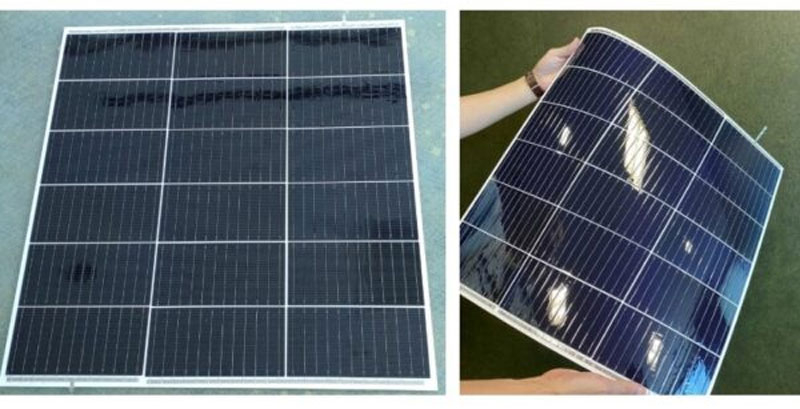Ultra-Light and Ultra-Thin Silicon-Based Solar Cells Have Emerged
Softbank announced that it has completed work on developing ultra-light and ultra-thin silicon-based heterojunction solar cells. These cells are intended for use on flying platforms in the stratosphere that could replace cell towers in remote areas of the world.
The flexible heterojunction solar cell, created by the Chinese company LONGi and the Japanese Fujipream Corporation at the request of Softbank, consists of a protective sheet, photocells, sealant and a back protective sheet with a thickness of 25 µm, 80 µm, 150 µm and 50 µm, respectively. A copper conductor with a thickness of 250 µm and soldering with low-temperature solder was used to connect the photocells to each other. The solar panel created in this way measures 563 × 584 mm and weighs only 218.5 g. A panel with an area of 1 m2 will weigh 665 g. The measured efficiency of the panel was 22.2%.
Stratospheric communication platforms, or HAPS (high altitude pseudo satellites), are represented mainly by airships. Flexible solar cells will be attached to the sloping backs and sides of these aerial giants. The cells must be lightweight and fairly efficient, but inexpensive. That is why Softbank settled on silicon. Lightweight multilayer solar cells using materials more efficient than crystalline silicon have already found application in space exploration, but they are three orders of magnitude more expensive, making the use of space technologies on Earth impractical.
If such panels are mass produced, they will find wide application in various fields, such as construction, the automotive industry and other areas where it is important to use free surface to collect solar energy.




